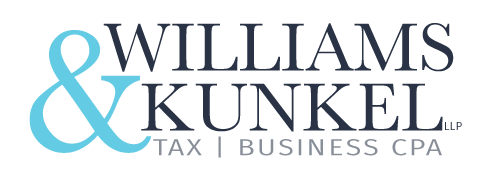With the changes made by the Tax Cuts and Jobs Act not well understood by many Americans, taxes can be confusing enough for employees. Being a freelancer or independent contractor adds another layer of complication. For example, did you know there are three additional types of retirement accounts available to self-employed individuals that are not accessible to employees?
Max out your retirement plan
Saving in a tax-advantaged retirement plan is one of the easiest ways to protect more of your earnings. And freelancers really have a nice array of options in this regard.
First, you can save in a traditional or Roth IRA. There are no earnings limits associated with the former. But for the latter, you’ll be barred from contributing directly if you make more than $137,000 as a single tax filer, or $203,000 if you’re filing jointly. Now, Roth IRAs have their benefits. But contributions to them are not made with pre-tax income, so they won’t save you money up front. The amount you contribute to a traditional IRA, however, isn’t subject to taxes, and you can max out this year at $6,000 if you’re under 50, or $7,000 if you’re 50 or older.
Other retirement options
That brings us to the plans available to self-employed earners but not regular employees. There’s the SEP IRA, which works just like a traditional IRA, except it comes with a potentially higher contribution limit. You can contribute up to 25 percent of your net business earnings for a maximum of $56,000 this year. Or, you might opt for the SIMPLE IRA, which can also save you money on your taxes up front. Short for Savings Incentive Match Plan for Employees, the SIMPLE IRA currently has an annual contribution limit of $13,000 if you’re under 50, or $16,000 if you’re 50 or older.
Finally, there’s the Solo 401(k). Like traditional 401(k)s, contributions to a Solo 401(k) are made with pre-tax earnings. Only Solo 401(k)s max out at a much higher level. You can contribute up to 25 percent of your net self-employment income for a maximum of $56,000 if you’re under 50, or $62,000 if you’re 50 or older.
Use this valuable deduction — if you qualify
If you’re a freelancer, the home office tax deduction can significantly lower your tax bill. The basic idea is that you can figure out what percentage your office takes up. Then, deduct a proportional amount of your home’s expenses, such as utilities, property taxes, mortgage interest, homeowner’s insurance, and more. You can completely deduct any expenses specific to that room.
However, if you plan to take the home office deduction, make sure that you qualify. There are two basic rules that need to be satisfied.
First, the space must be your principal place of business.
Second, the space must be exclusively for your business. A computer cart in the corner of your master bedroom doesn’t make the entire bedroom your home office. It doesn’t necessarily need to be a separate room, but it does need to be a clearly defined space.
Here’s a new and valuable deduction for your freelance efforts
Freelancers got a potentially huge tax break from the changes to the tax laws in late 2017, when lawmakers added a provision known as the pass-through business deduction. Under the terms of this brand-new provision for the 2018 tax year, freelancers who either run their businesses as a sole proprietorship or who elect to form partnerships or limited liability companies as their business entities can generally claim a 20 percent deduction of any qualified business income that they generate. For singles who make up to $157,500 in total income or joint filers with incomes up to $315,000, the tax break is available on the net amount of profit that a freelance business generates after taking into account other available business deductions.
The rules for higher-income taxpayers are extremely complex. Eligibility for the pass-through deduction depends on the nature of your business. Also, it depends the number of employees you have, the amount you pay any employees in wages, and how much business property your business owns.
For the typical freelancer, though, deducting 20 percent of income can mean a reduction of hundreds or thousands of dollars. If you’re a freelancer, look closely at the pass-through business deduction to see how much it will save you.
Call Williams & Kunkel CPA today in Flower Mound at 972-446-1040 to have a chat and find out how you can save money on your taxes as a real estate professional.
In addition, you can connect with us to receive updates throughout the business week by following us on Twitter or LinkedIn or liking us on Facebook.
Source: Fox Business

